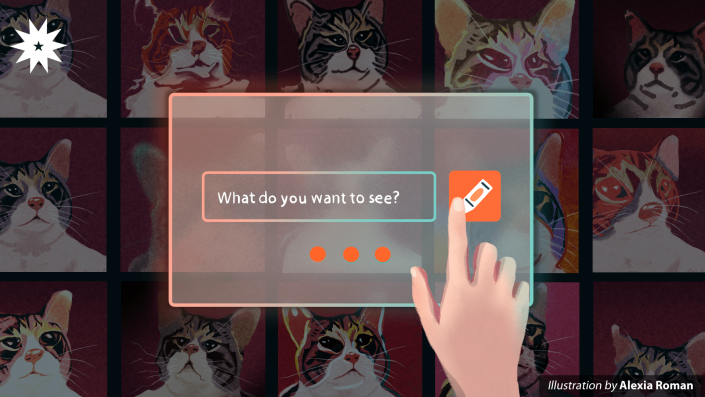Think you can beat a robot at art? You should think twice.
Artificial intelligence (AI) has come a long way from simple text-based programs. In recent years, various companies and research groups have developed AI image generation software with the capability to generate detailed images described with just keywords. By feeding these programs with text or images, AI software can learn how to run their own programs, write their own stories, and now generate their own images, including art and realistic faces.
Programs that generate these images through artificial intelligence are called AI image generation software. An example is the Deep Dream Generator developed by Google, which focuses on exploring AI by developing creative tools such as Deep Style, which can interpret and transfer a painting’s style to uploaded images.

As explained by Kaloyan Chernev, the chief technology officer of Deep Dream Generator, the generator focuses on style transfer technologies using neural networks—which are algorithms that recognize patterns and correlations and learn from the data presented. Modeling the program after the human nervous system, he emphasizes the importance of feeding the software a broad and balanced range of data. “We believe neural networks should be allowed to learn from all possible sources, but there should [be a] balance between each category of information,” Chernev explains.
Reaching the limit
While AI poses to be revolutionary, it still has its limitations and risks. AI image generation software must be provided with a wide range of balanced data since it can only learn and produce outputs from what they observe. Thus, lessening bias from the data set will give more accurate and inclusive results.
Chernev compares artificial intelligence to how children are taught how to discern between good versus bad in the world. “Inevitably though, some level of [bias] will emerge, just like it will with the children,” he remarks. Nonetheless, he added that it would be impossible to remove every kind of bias given certain data sets, positing that “AI should be free to explore the world.”
Software programs for AI image generation software are open-source and easily accessible; however, concerns about their misuse arise as the programs could easily be used for unethical purposes like plagiarism or child pornography. To prevent this, the Deep Dream Generator has automated systems that monitor the inputs. These automated systems are further bolstered by a moderation process to regulate checking.
Soon, Deep Dream Generator aims to continue developing more AI tools and expand to video and audio generation. Chernev expresses optimism for the future of AI image generation, hoping that one day it could progress to video generation. “One day, you should be able to just type a short story, and our system should be able to generate a video about it,” affirms Chernev.
Pushing boundaries
Another issue brought by AI-generated art and images is the ethics and monetization of data used by the software. Since AI is trained on image datasets taken from the internet, these datasets may include copyrighted works, such as art from artists posted online. Thus, AI image generation software can learn to copy specific aesthetics from artists and generate their own pastiches.
Artists may lose jobs as companies will seek to outsource art from AI. Moreover, using images taken from the internet undermines artists’ intellectual property and copyright, especially when AI is trained to follow specific art styles of artists who are not compensated for including their art in AI training datasets. In fact, AI art is already being used by internet newsletters and magazine covers to provide images, marking the beginning of companies using software to illustrate stories rather than paying artists.
Aside from art, AI can also develop other forms of unique media, such as realistic faces of people, complete with synthesized voices. Known as deepfakes, this form of AI has already entered the special effects industry in Hollywood. Besides their uncanny ability to conjure fictional people, this technology can also deceive people and contribute to fraud and misinformation—especially if placed in the wrong hands.
Given that almost anything can be faked, government and corporate policies that address modern issues on fraud and misinformation need to catch up with current developing technologies so that their benefits can be maximized while their risks and issues can be minimized by users.
Generating the future
With AI-generated images popping up all over the internet to generate art and edit faces, the future of AI image generation software appears to be just around the corner—especially with further research and development in the field. AI image generation could serve as a useful tool for artists, art directors, and filmmakers that could aid their creativity rather than hinder them.
There is much left to tackle on the ethics of AI images. As we move toward a modern era of art with technology, we must also work toward understanding the full consequences and capabilities of AI as we use them as creative tools rather than a replacement for human art.
